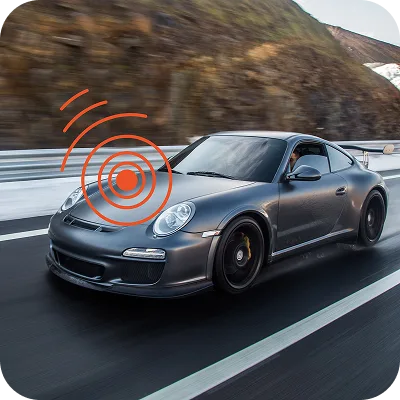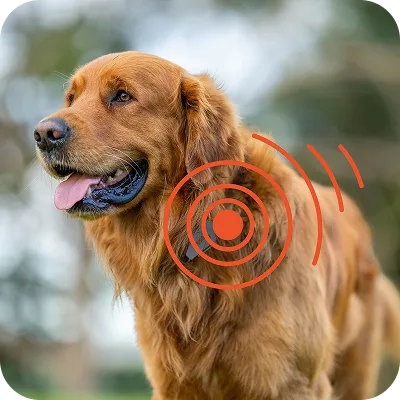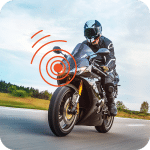Between scrolling YouTube tutorials and digging through Google guides, installing a GPS tracker might look like a technical headache. The good news is that setting up your GPS tracker is easier than it appears ( trust us !), and you can have it running in minutes.
In most cases, installation comes down to three steps: placing the tracker in the right spot -> connecting it to power -> confirming that it works. Hardwired units need a quick connection under the dashboard, while plug-and-play and wireless trackers can be installed in minutes without getting handy with tools.
This how-to guide covers everything you need to know to set up your tracker correctly. We’ll also discuss the best installation method for wiring tips, along with placement suggestions. By the end, you’ll have a reliable GPS system ready to go, keeping your vehicle protected at all times.
………………………………………………………………………………………………………………..
Car Tracker Installation: Key Takeaways
- Opt for hardwired for long-term reliability, OBD-II for quick plug-in use, or wireless for flexibility and portability as well.
- Hardwired trackers require connecting a few key wires and finding a discreet spot under the dash for optimal GPS reception.
- OBD-II trackers can do more than track location, offering vehicle metrics like engine speed, mileage, and fault codes.
- Battery-powered trackers need periodic recharging; plan ahead to avoid losing coverage.
- Always consider privacy, security, and legal requirements, including driver disclosure and tamper alerts.
……………………………………………………………………………………………………………
Types of Car Trackers: Hardwired, Plug-in, and Wireless
Before you jump right into installation with tools, let’s take a look at our options of GPS trackers. Most devices fall into three main categories
- Hardwired
- Plug-in (OBD)
- Wireless battery-powered trackers
So, when it comes to the installation method, it solely depends on which one you have.
A wireless car tracker is the easiest to set up. Since it has its own battery, you can place it anywhere in the vehicle. Many wireless trackers come with magnetic backs, allowing you to attach them securely to metal surfaces such as the chassis or bumper.
A plug-in GPS tracker is almost as easy. These devices connect to your vehicle’s OBD-II port — the same port mechanics use for diagnostic checks and power on automatically. This option is widely used for fleet management because it provides both GPS data and vehicle diagnostic information.
Want something that stays under the radar? Go with a hardwired GPS tracker. You just tap its power and ground wires into your car’s electrical system under the dash. It stays hidden and can’t get yanked out by mistake.
Installing a GPS Tracker on Your Car: A step-by-step Guide
Here’s a straightforward guide to installing the hardwired, plug-in (OBD-II), and wireless GPS trackers so you can get started quickly and with ease.
- Installing a Hardwired GPS Tracker
Hardwiring a tracker is one of the most reliable options because it stays hidden, draws constant power from the vehicle, and can’t be accidentally unplugged. Here’s how to do it step by step:
Step 1: Access the Dashboard Wiring
While using a screwdriver, take off the lower dashboard cover. Look for the ignition and constant power wires, usually attached to the ignition switch. Use the voltage meter to check. There should be 12V at the solid power wire even with the car off.
“Tip: Make sure to always check your car’s wiring diagram if you are unsure of what you are working with.”
Step 2: Connect it to the Tracker
Just take a small piece of insulation off the constant power wire and wrap the tracker’s red wire around the exposed copper wire. Tape down with electrical tape. Do the same with the ignition wire and the tracker’s white wire. Use one of the ring terminals for the tracker’s ground (black) wire, and attach it to a clean, unpainted surface of metal inline using electrical tape to hold it in place.
“Safety tip: Be careful and make absolutely sure you do not cut the power wire all the way through, just strip enough insulation back to make a clean connection.”
Step 3: Secure it & Test
Attach the tracker firmly to the underside of the dashboard with double-sided tape. Also, make sure the GPS side is facing upwards ( for a solid and good signal !). After you wrap the wires up with tape or zip ties, reattach them to the dash. Start the car to ensure that the tracker is successfully powered on and it is reporting to its app or web dashboard.
- Installing a Plug-in (OBD-II) GPS Tracker
If you’d rather skip wiring altogether, go for a plug-and-play tracker.
- Find the OBD port
The OBD port can be seen under the driver’s side dash, the steering column, or in the glovebox.
- Insert the Tracker
Now, insert the tracker into the OBD port. Make sure the device clicks securely into place.
- Power on the Device
Always follow the steps recommended by the manufacturer. You can usually do it by scanning a QR code, downloading an app, and linking the tracker to your account.
- Check the Signal
Start the engine to power the tracker. Open the app to check that the car’s location is updating in real time, and that’s it !!
- Installing a Wireless GPS Tracker
Wireless (battery-powered) trackers are the most flexible. No wiring, no tools required.
- Charge the Battery
Fully charge the tracker before installation to avoid downtime.
- Choose a Location
Simply select a place with a clear line to the sky for a strong GPS signal. It can be located under a seat/inside the glove compartment, or even under the vehicle.
- Mount the Tracker
You can use built-in magnets, straps, or any of the adhesive pads to hold it securely in place.
- Activate and Test
Next, turn on the device, pair it with the app/web dashboard, and double-check that the location updates are running correctly. You can always adjust the placement if you want to.
So, which GPS tracker is the right one for you?
This decision entirely depends on your priorities. Here’s what the three main options are going to offer you.
Hardwired Car Trackers
- Provides Reliability
- Direction connection to the connect directly to the ignition and constant powered lines
- Uninterrupted tracking
- Access to vehicle data including engine diagnostics
- Permanently installed for stealth.
FACT #1 Hardwired trackers don’t depend on vehicle battery health. So they continue tracking even if the car is off for days. |
Plug-and-Play (OBD-II) Trackers
- Convenient
- Plugs into the vehicle’s OBD-II port under the dashboard
- Easy to install and remove without any tools
- Accessible to vehicle data
- Portable & transferable between vehicles.
FACT #2 Most of the vehicles sold in the United States after 1996 have an OBD-II port, making them ready for plug-and-play trackers. |
Wireless (Battery-Powered) Car Trackers
- Simple and fast to install
- Easily placeable anywhere
- Portable and perfect for temporary tracking/multi-vehicle tracking.
Check out the Car Tracker Options from PAJ GPS
PAJ GPS offers a full line of devices for your needs, ranging from hardwired to our portable battery-powered models. All of the trackers connect to our online portal and mobile app, providing accurate, real-time data at any time!
| Tracker Type | PAJ Model | Installation Required | Power Source | Best Use Case | Benefit |
Hardwired Tracker | VEHICLE Finder 4G (1.0 & 2.0) | Yes (wired to vehicle) | Vehicle battery (9–75 V) | Permanent fleet tracking, theft protection | Always powered, discreet & tamper-resistant |
| Plug-in (OBD-II) Tracker | CAR OBD Finder 4G 2.0 | Yes (plug into OBD-II) | OBD-II port | Quick setup for personal or business vehicles | Easy to install and transfer between cars |
| Battery-Powered Wireless Tracker | POWER Finder 4G | No (place inside vehicle) | Rechargeable battery | Temporary tracking, rental/ multiple vehicles | Portable, flexible placement, no wiring needed |
Next Step
Now that you’ve been introduced to the car trackers and the methods of installation, it is time to choose a tracker. The right smart tracker really does make a difference in securing your vehicle. Take a look at our PAJ GPS models, compare the functions, and see which one suits your needs best.
Now read checklist for used Car Buyers in the US
FAQs
1. Can I install a GPS tracker myself?
Yes. Plug-and-play OBD-II and wireless trackers are the best and safest choice for DIY installation. Meanwhile, hardwired trackers require basic knowledge of vehicle wiring.
2. How often do wireless trackers need charging?
Most battery-powered trackers last around 3–6 months per charge( depending on usage). Magnetic mounts also make it quite easy to swap or recharge them.
3. Are GPS trackers legal to use in my vehicle?
Yes, that typically should not be a problem. However, you must always check your local laws and inform the drivers that you are tracking them.
























